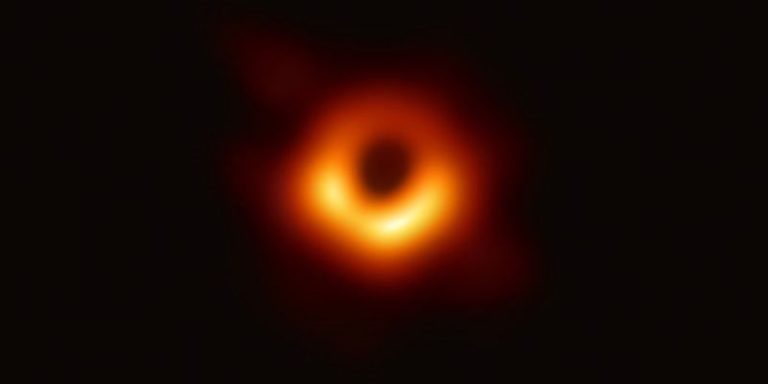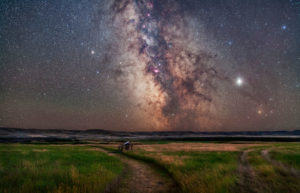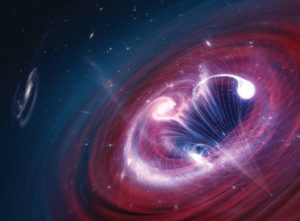First-Ever Picture Taken of the Milky Way’s Black Hole
What can scientists learn from the new data?
By: Kirsten Brooker | May 20, 2022 | 629 Words

(Photo by National Science Foundation via Getty Images)
Scientists have recently released a picture of the black hole in our galaxy, the Milky Way. The name of the black hole is Sagittarius A, or A-star. About three years ago, the first-ever picture of a black hole was captured in the M87 galaxy, but this is the first photo of the one within the our own area of space. The two snapshots allow scientists to move forward with their research and learn important things about gravity and space.
A black hole is an area in space with extremely strong gravity – so strong that even light can’t escape. That’s why we can’t see them with the human eye; we need special tools to detect and photograph them. They are often formed when a star is dying, and the gravity is so strong because a lot of matter (or “stuff”) gets squeezed into a small space. This gives black holes a large mass. According to NASA, Sagittarius A “has a mass equal to about 4 million suns and would fit inside a very large ball that could hold a few million Earths.”

Milky Way (Photo by: Alan Dyer/VWPics/Universal Images Group via Getty Images)
The Milky Way
The Milky Way, approximately 13.61 billion years old, is the galaxy that holds our solar system. It has between 100 and 400 billion stars. The galaxy can be seen in the night sky as a smoky band of light.
Finns and Estonians believed it to be the “Pathway of the Birds,” while Greeks and Romans saw it as a river of milk flowing from their goddess Ops, thus giving it the name we use today, Milky Way. It appears as a band of clouds and light with the naked eye, but once viewed through a telescope, it is a stretch of millions of stars that make up the spiral arm of our galaxy.
The Black Hole

The black hole in the center of the Milky Way is about 27,000 light-years away from Earth and had never before been captured by photo. In fact, due to the intense gravity, it is impossible to take pictures of the black hole itself. The matter is dense, and the pull of gravity is so strong that light cannot escape it. The image taken by scientists is actually its shadow and the gaseous ring of light that surrounds it. The light used to capture the image is far enough away from the hole that the gravity does not affect it.
For over 12 years, 300 scientists have worked to learn more about the black hole and the galaxy itself. These scientists make up a group known as the Event Horizon Telescope (EHT) project. The team used a “super telescope” that combined measurements from other radio telescopes around the world. The times and locations of the measurements from the different telescopes were put into a computer, and used to create a single image.

Illustration of a black hole in space. (Illustration by Tobias Roetsch/Future Publishing via Getty Images)
“These unprecedented observations have greatly improved our understanding of what happens at the very center of our galaxy and offer new insights on how these giant black holes interact with their surroundings,” said EHT Project scientist Geoffrey Bower.
The picture of the black hole in the Milky Way will be compared to an earlier image of the black hole taken in the M87 galaxy. Now that scientists have the two photos to compare, they will be able to learn much more about space and gravity. With the new data in hand, the EHT scientists are excited to embark on a new learning journey and discover even more about outer space.
















